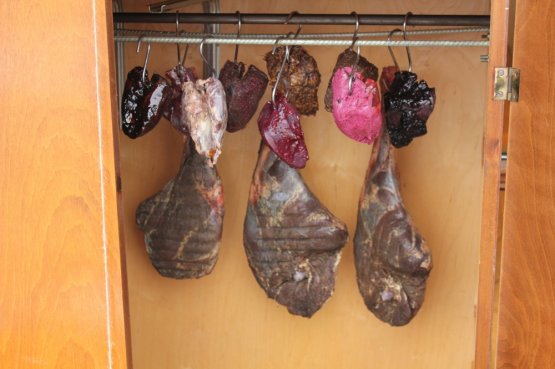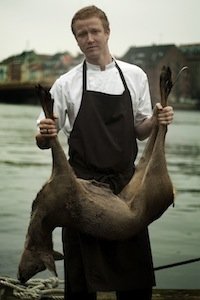10-12-2012
After hunting
First, learn to discern foods from transformation of foods. A neophile approach on wild mammals

The first distinction to make in order to cure meat is between the food (vegetables, fish or meat) and the agents that are used in the transformation of foods (bacteria, yeasts and molds). Ben Reade explains it all
At Nordic Food Lab we have a constantly evolving focus, however, essentially all study of ingredients must boil down to a study of biology. We analyze the "edible biogeography" (the distribution of edible species within our area) using a systematic approach to enable us to build a system of ‘gastronomic taxonomy’, or ingredient classification. Modeling our outlook on the phylogenetic trees used by biology to represent the evolutionary similarity and difference between species we can start to build our own ‘culinary phylogeny’.
One of the first distinctions we can make in our edible tree of life is between those that are foods (e.g. vegetables, fish or meat), and those that are used in the transformation of foods (e.g. bacteria, yeasts and molds). In this glimpse into our lab, we will have a look at how we can begin to use a wild animal by introducing him to certain useful and transformative microorganisms.

Ben Reade with his quarry
While analyzing the edible biogeography one of the first things to become apparent are the mammals. These wild animals spend their time eating so many of the wild ingredients which are so celebrated by the gastronomic world such as mushrooms, herbs and berries - which all impart their flavor to the meat. Typically wild animals live very active lives which gives the meat unique texture and taste. Getting to know a good hunter could be one of the most valuable things a chef can do. As a
neophile (someone always searching for new tastes) wild animals offer a unique opportunity to step away from the norm and serve something with genuine character.
Let us take roe deer (Capreolus capreolus) as our example. After being shot, the gutted animal can then be hung to develop more flavor, perhaps a good rule-of-thumb for how long to hang the deer is this. To find the number of days to hang, multiply the hanging temperature by the number of days until you reach 40 – this will give you an appropriate length of time. For example, at 6°C the deer might be left to hang for around 7 days. Once hung and skinned, the chef has many options, but I’d like to talk about how we can introduce this deer to salt in order to cure it. Thus spuring an intimate relationship between the dead meat and living microorganisms – representatives from the transformative branch of our gastro-taxonomy.
1. to be continued
Nordic Food Lab
The most interesting experiments held in the Nordic Food Lab in Copenhagen, housed, since 2009, in a boat moored in front of René Redezpi’s Noma
Born in Edinburgh, head of culinary research and development at the Nordic Food Lab, he spends his time navigating the world through his nose and mouth
Author's articles list